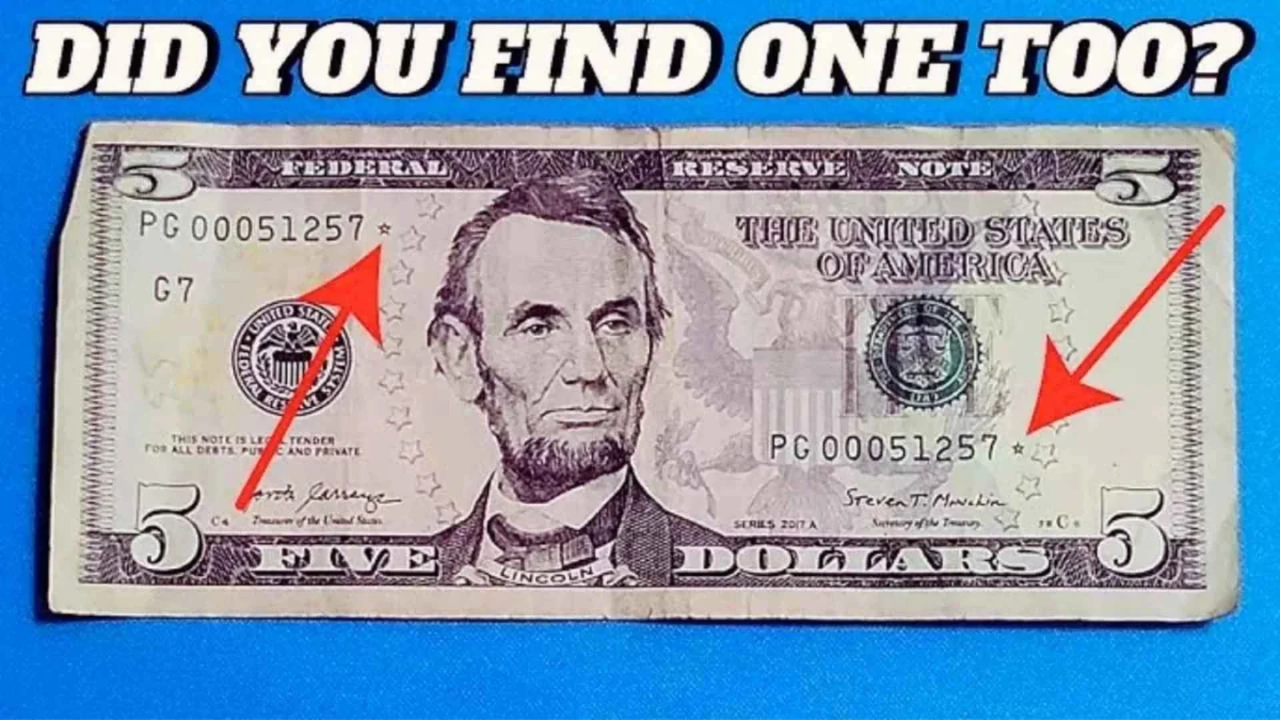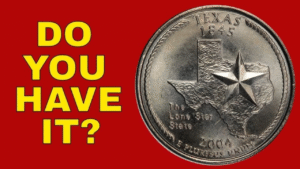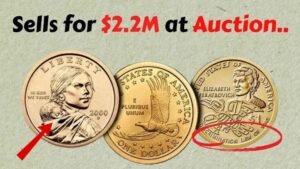Is Your $5 Bill Worth $60,000: Imagine paying for lunch with a $5 bill that’s actually worth $60,000! A rare $5 bill, known as a star note, recently sold for this huge amount at auction because of its unique features. These special bills, with a star in their serial number, could be hiding in your wallet or change. This article explains in simple words what makes these bills valuable, how to find one, and what to do next. Check your cash—you might have a hidden treasure!
What Is a Star Note?
A star note is a special U.S. dollar bill made to replace one that was damaged or misprinted during production at the U.S. Bureau of Engraving and Printing. Instead of a letter at the end of the serial number, it has a star symbol (★). These bills are printed in smaller numbers than regular bills, making them rare and exciting for collectors. For example, while millions of standard $5 bills are made, only a small batch, like 320,000, might be star notes for a specific year.
Why Are Some $5 Star Notes Worth $60,000?
Star notes are valuable because fewer are made, and some have unique features that collectors love. A 1969 $5 star note with a low serial number sold for $60,000 at auction due to its rarity and perfect condition. Other factors that boost value include:
- Low Print Runs: Fewer printed means rarer bills.
- Special Serial Numbers: Numbers like 00000005 or 12345678 are prized.
- Condition: Crisp, unworn bills fetch higher prices.
- Historical Years: Certain years, like 1934 or 1969, are more sought after.
Famous $5 Star Notes to Look For
Here are the top rare $5 star notes collectors want:
1. 1969 $5 Star Note (Low Serial Number)
- Why Rare: Very few printed with serial numbers under 100.
- How to Spot: Look for a star (★) at the end of a low serial number (e.g., 00000005★).
- Value: $10,000–$60,000 in pristine condition.
2. 1934 $5 Silver Certificate Star Note
- Why Rare: Limited printing during the Great Depression, blue seal.
- How to Spot: “1934” on the front, star in serial number, blue seal.
- Value: $5,000–$60,000.
3. 2003 $5 Star Note (Chicago District)
- Why Rare: Low print run from the Chicago Federal Reserve.
- How to Spot: Star in serial number, “G” for Chicago, “2003” year.
- Value: $1,000–$20,000.
| Star Note Type | Key Feature | Estimated Value |
|---|---|---|
| 1969 Low Serial Number | Star with serial under 100 | $10,000–$60,000 |
| 1934 Silver Certificate | Blue seal, star in serial | $5,000–$60,000 |
| 2003 Chicago District | Star, “G” mark, 2003 year | $1,000–$20,000 |
How to Spot a Valuable $5 Star Note
To find a rare star note:
- Check the Serial Number: Look at the top-right or bottom-left corner for a star (★) at the end.
- Note the Year: Check for “1934,” “1969,” or “2003” on the bill’s front.
- Look for Special Numbers: Low numbers (e.g., 00000005), repeating digits (77777777), or ladder numbers (12345678) are valuable.
- Inspect Condition: Unworn, crisp bills with no folds or stains are worth more.
- Check Federal Reserve Letter: For 2003, look for a “G” (Chicago) on the front.
Use a magnifying glass to spot details, and compare with a regular $5 bill if unsure.
Where to Find These Star Notes
You might find star notes in:
- Everyday Change: Check cash from stores or ATMs.
- Old Stashes: Look in wallets, drawers, or family collections.
- Bank Withdrawals: Ask for $5 bills at your bank.
- Coin Shops or Auctions: Check eBay, Heritage Auctions, or local dealers.
What to Do If You Find One
If you think you’ve found a valuable star note:
- Don’t Clean It: Cleaning can damage it and lower its value.
- Store Safely: Place it in an acid-free currency sleeve or plastic holder.
- Get It Appraised: Take it to a professional at PCGS Currency or PMG for grading.
- Sell Smart: List it on eBay with clear photos, contact a dealer like APMEX, or use auction houses like Heritage Auctions.
Avoiding Fakes
Fake star notes exist, with some altering regular bills to add a star. To avoid scams:
- Check the Star: Ensure it’s printed, not drawn or glued.
- Verify Weight: A real $5 bill weighs about 1 gram.
- Get Professional Grading: Only trust PCGS or PMG to confirm it’s real.
Conclusion
A $5 star note worth $60,000, like the 1969 low serial number or 1934 silver certificate, could be hiding in your wallet, change, or old cash stash. Look for a star in the serial number, key years like 1934 or 1969, and special numbers, then get any finds graded by experts. Beware of fakes and handle bills carefully to keep their value. The thrill of finding a rare star note makes every $5 bill worth a second look. Start checking your cash today—you might uncover a fortune!
FAQ
Is a $5 star note really worth $60,000?
Yes, a 1969 $5 star note with a low serial number sold for $60,000, and 1934 versions can reach similar values.
What makes a $5 star note valuable?
A star in the serial number, low print runs, special serial numbers, and crisp condition make them rare.
Are $5 star notes still in circulation?
Yes, they can appear in everyday change, bank withdrawals, or old collections, though rare ones are hard to find.
How do I spot a valuable $5 star note?
Look for a star (★) in the serial number, years like 1934 or 1969, and low or unique numbers.
What should I do if I find a rare star note?
Don’t clean it, store it in a sleeve, get it graded by PCGS or PMG, and sell via auctions or dealers.




1 thought on “Is Your $5 Bill Worth $60,000? How to Spot a Rare Star Note!”